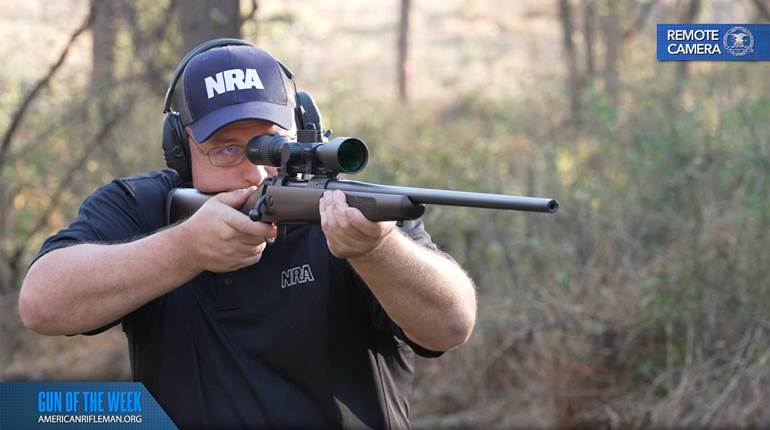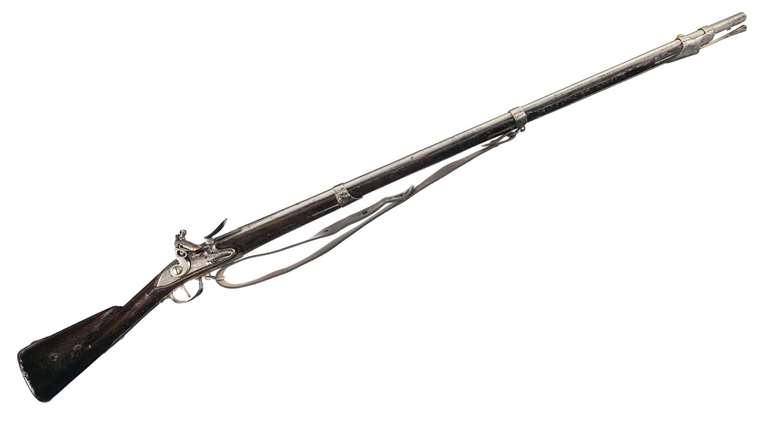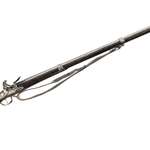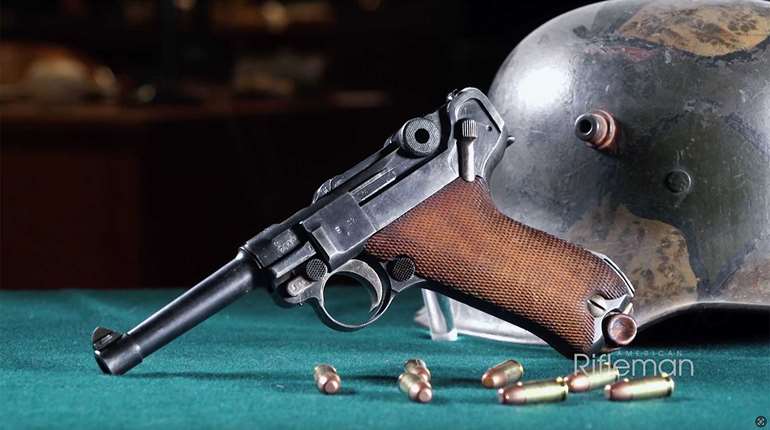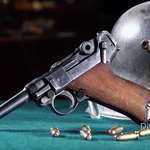
Introduced overseas in 2021 and brought to our shores in 2024, Beretta’s BRX1 offers a fresh take on the century-old straight-pull rifle concept. While popular in Europe, this type of action has never really established a toehold in the American market—a fact that Beretta is seeking to challenge with the versatile and relatively economical BRX1.
The BRX1 weighs 7 lbs., 5 ozs., unloaded, feeds from a detachable five-round magazine and is modular with chambering and stock changes requiring no more than an Allen wrench. Its barrel is bedded into a V-shaped channel in the 6082 aluminum-alloy receiver and secured with a steel locking lug and two captive screws. The rifle and its cartridge conversion kits are available in .243 Win., 6.5 mm Creedmoor, .308 Win., .30-’06 Sprg., 7 mm Rem. Mag. and .300 Win. Mag.—with others in development; our test rifle was chambered in 6.5 mm Creedmoor. Changing the bolt head is a tool-free operation and only necessary when switching to or from one of the two magnums, which use a 16-lug bolt head, from a non-magnum cartridge that has an eight-lug bolt.

The 22", cold-hammer-forged, blued-steel barrel tapers after the chamber to 0.75" in diameter and has a muzzle threaded 5/8x24 TPI and protected by a knurled cap. It is free-floated, meaning it does not contact the stock, ensuring a more consistent point of impact. An uncanted, steel Picatinny rail is attached to the barrel extension with four Torx head screws; it cantilevers rearward, allowing a scoped and sighted barrel to be removed and remounted to the receiver with no more than a one-m.o.a. change in zero, according to Beretta.
The action’s lock-up and ejection are reminiscent of the AR-15, utilizing a rotating bolt with lugs that lock into corresponding recesses in the barrel extension and a plunger-style ejector contained in the bolt face. A nickel-plated bolt is contained inside the bolt carrier, which slides on two receiver rails as the action is worked. The extractor also lies within the bolt face.
Bolt-action rifles aren’t usually adaptive to different shooting styles, but the BRX1 is an exception because the bolt handle and case ejection can be independently set to the left or right side easily and without tools. This benefits both left-handed shooters and those who use a bipod rest and cycle the action with their support hand while retaining a firing grip.
The trigger mechanism’s pull weight can be changed from the 3-lb., 5-oz., factory setting (measured 3 lbs., 2 ozs., on our test gun) to 2 lbs., 1 oz., or 2 lbs., 9 ozs., by sliding a button on the housing. This mechanism is made from polished, nickel-plated carbon steel and is contained within a plastic housing that can be removed from the stock by releasing a metal latch. One polymer magazine is included with the BRX1; it is secured within the rifle by spring-loaded tabs on either side and has a bright orange body for easy retrieval if dropped in the field.

Somewhat awkward, the rifle’s thumb-activated safety button is mounted at the rear of the bolt carrier and offers three modes of operation confirmed by color codes. The forwardmost position is “fire,” with white and red marks visible. The middle position locks the trigger but allows the bolt to cycle and is indicated by white. The rearward position displays no color and locks both the trigger and action.
The lightly textured polymer stock, available in black or green, consists of the buttstock with a 5/8" recoil pad, grip insert and fore-end; two steel sling studs are attached. The stock has a 14" length of pull but can be adjusted with the included 1/2" spacers. According to Beretta, the downward-sloping comb is intended to keep the shooter’s eye aligned with the scope when making uphill shots. A grip insert that makes the angle more vertical and a wood buttstock and fore-end are available.
The BRX1 was tested for precision and ammunition preference at 100 yards with its trigger at its lightest setting, breaking after slight take-up and creep. Our 15-group average for the three test loads came to 1.66", a result that would have been much better if not for the gun’s obvious distaste for Fiocchi’s 129-grain load. Most three-shot groups fired with the other loads met Beretta’s sub-m.o.a. accuracy guarantee.
The action cycled smoothly in most instances but occasionally failed to fully extract the first round of a five-shot string without the magazine needing to be removed with every load except Federal Gold Medal; using the Fiocchi load, this stoppage occurred on nearly every round. Minute brass flakes found on the underside of the locking lugs and small striations on a few fired cases indicate bolt clearance on this individual rifle was the likely cause.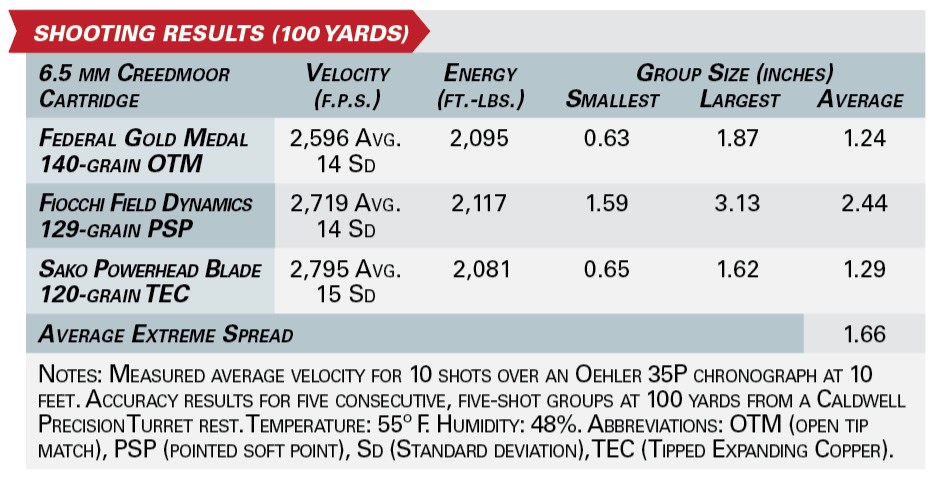
Beretta’s BRX1 was designed to require minimal mechanical force to unlock the action and cock the hammer, and the bolt carrier is assisted during its last inch of travel by the spring-loaded “recoil lever” contained in the trigger group. That level of engineering yielded rapid, smooth cycling of the bolt.
Though this rifle is intended for hunters, the BRX1’s smooth action and adaptable features may appeal to a wider market should Beretta continue to produce specialty variants and suitable accessories at a reasonable price, like the recently introduced Ranch model. And an accurized, suitably stocked BRX1 may also interest tactical and PRS buyers if a faster, more ergonomic safety were to be developed.
As currently configured, however, this Beretta offers features similar to those of some other European straight-pull rifles—and a few additional ones—at a far more affordable price.















